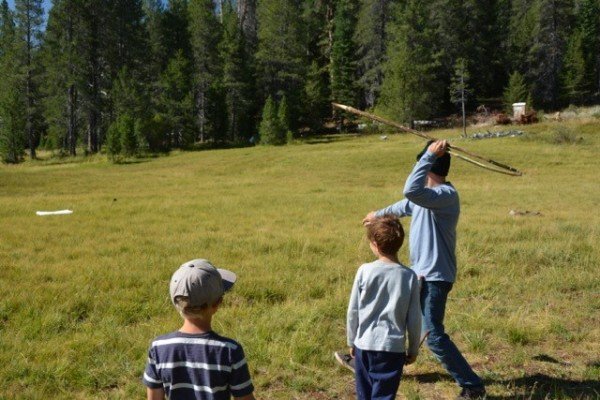So you’re lost in the woods and you’ve already established a good shelter, a water source and a way to make fire. You’re doing pretty good except you need some food.
Most people might feel a primal urge to make a spear. Heck, that’s what our ancestors did, right? Well, there’s a better option if you want a more efficient weapon and it doesn’t matter whether or not you can pronounce it.
The atlatl (pronounced at-latl) is a very old weapon thought to be invented by the Aztecs and proceeded the bow and arrow in most indigenous cultures. It’s essentially a spear thrower, and although it sounds complicated, I’ve actually taught kids to make and throw them with pretty good accuracy in less than a day. In addition to improving the range of your spear, speeds have been known to reach almost 100 miles an hour.
Let’s face it, most people in a short term survival situation won’t be inclined to make an atlatl. But they are fun to make and throw and could prove to be useful if you seriously needed one. I figure the more I know, the better prepared I am and that’s important to folks who spend a lot of time in the wild. Besides, learning primitive hunting skills gives me more appreciation for the art of stalking and hunting.
When you think of the actual spear to be thrown, think of it more like a dart. You want to find wood that is relatively light and straight. It’s also nice to select something around a half-inch in diameter (thinner than a typical spear). It’s also important that it is properly weighted at the tip so it flies straight. You can use feathers at the other end to make it fly better. We’ve even tied a bundle of pine needles at the end when we’re teaching the process to kids.
The word atlatl refers to the handle (thrower). It’s essentially a stick with a cup or a spur at the end of it that propels the butt of the spear or dart. Think of it like an extension of the arm that whips the dart like a lever. This motion greatly increases velocity and speed. The handle is usually around 16 inches long and can be slightly curved. You can take your knife and drill a small cupped hole in the end of the dart so the spur of the handle holds it firmly.
Learning how to operate the atlatl can be a bit awkward at first, but with a little practice you will find that they are pretty darn accurate. Gripping the handle and the dart with one hand is the challenging part but you’ll soon learn where the best hand position is. Beginners might want to use both hands to get the hang of it. I’ve seen 8-year-olds hit a hay bail from 20 yards away.
I recommend first making a basic set and then adjusting it to your needs. Experimenting with different materials and dart lengths will lead to an atlatl that works well. I have also found great natural spear points along creek beds which makes a nice tip. If you’ve never made an arrowhead, you can practice chipping rocks until you make a nice point. Feathers work well for fletching and you can use natural cordage to attach them to the dart.
Whether or not you actually ever need an atlatl, you will have the skills to make one and next time you’re out in the woods, give it a try. Or you can collect the materials and take them home. The atlatl has long been a very reliable weapon and has stood the test of time. Learning ancient techniques for hunting and protection are essential for anyone interested in building their survival skills.
For more on the atlatl visit the World Atlatl Association web site.








